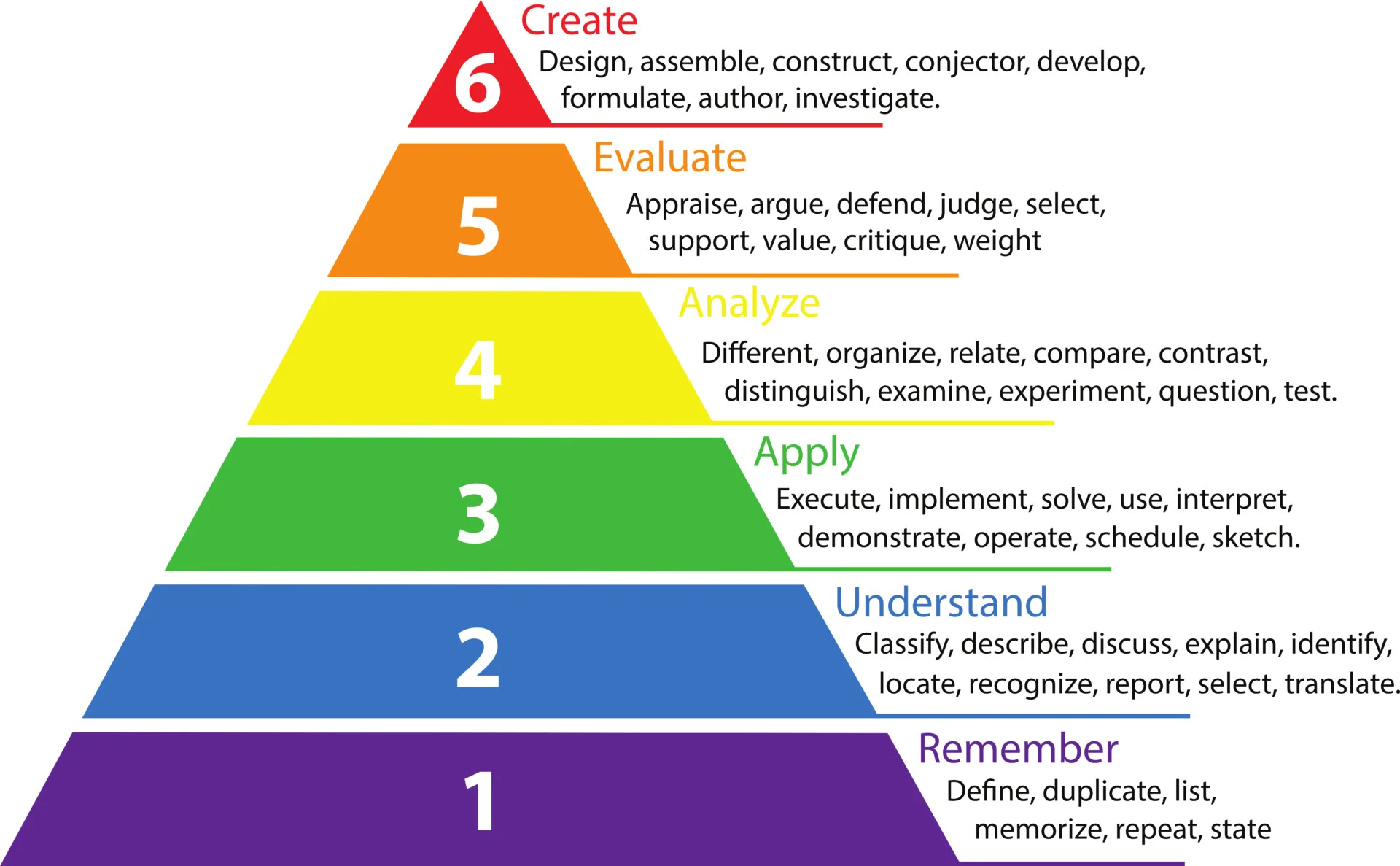3 Understanding Your Thinking Process
Thinking is the core process that shapes how individuals perceive the world, solve problems, make decisions, and interact with others. To achieve personal effectiveness and self-leadership, it is essential to understand one’s own thinking patterns. The way we think influences not only our actions but also our emotional states, interpersonal relationships, and leadership styles.
Stephen R. Covey (1989) emphasized that proactive individuals cultivate higher-order thinking by focusing on principles and values. Daniel Goleman (1995) connected thinking processes with emotional intelligence, pointing out that effective leaders regulate their thoughts as much as their emotions. Peter F. Drucker (2017) highlighted that managing oneself involves recognizing how we learn, make decisions, and process information.
Thus, understanding the thinking process is not simply an academic exercise — it is a critical competency for managers, leaders, and individuals aiming to achieve meaningful success.
3.1 Nature of Thinking
Definition of Thinking
Thinking is the process of mentally manipulating information to form concepts, solve problems, make decisions, and reflect on experiences. It involves both conscious reasoning and subconscious processing.
Key Elements of Thinking
- Perception: How we interpret information from the environment.
- Reasoning: Drawing conclusions from available evidence.
- Imagination: Creating mental representations beyond immediate reality.
- Evaluation: Judging the validity and usefulness of information.
Levels of Thinking
- Concrete Thinking: Based on observable facts and immediate experience.
- Abstract Thinking: Involves concepts, symbols, and hypothetical reasoning.
- Reflective Thinking: Critically analyzing past experiences for insights.
- Creative Thinking: Generating novel ideas and alternative solutions.
3.2 Theories and Frameworks of Thinking
3.2.1 Bloom’s Taxonomy of Cognitive Processes
Benjamin Bloom classified thinking into six hierarchical levels:

- This taxonomy illustrates how higher-order thinking (analysis, evaluation, creation) is essential for leadership and decision-making.
3.2.2 Dual Process Theory (Kahneman)
Daniel Kahneman distinguished between two modes of thinking:
- System 1: Fast, intuitive, emotional, and automatic.
- System 2: Slow, deliberate, rational, and effortful.
Effective leaders recognize when to rely on quick intuition and when to engage in deliberate reasoning.
3.3 Critical vs. Creative Thinking
- Critical Thinking: Evaluating information logically, identifying assumptions, and reducing errors.
- Creative Thinking: Producing new ideas, challenging conventions, and innovating.
Both are complementary and essential in business problem-solving.
3.4 Cognitive Patterns and Biases
Common Thinking Biases
- Confirmation Bias: Favoring information that confirms existing beliefs.
- Anchoring Bias: Relying too heavily on the first piece of information.
- Availability Heuristic: Judging likelihood based on easily recalled examples.
- Overconfidence Bias: Overestimating one’s accuracy or ability.
Impact on Decision-Making
Cognitive biases can distort reasoning, leading to flawed judgments in management and leadership. Recognizing these patterns enhances objectivity.
3.4.1 Comparison of Thinking Patterns
| Thinking Type | Strengths | Limitations |
|---|---|---|
| Rational/Analytical | Logical, structured, evidence-based | Time-consuming, rigid |
| Intuitive | Fast, holistic, experience-driven | Prone to biases |
| Creative | Innovative, divergent, flexible | May lack practicality |
| Critical | Objective, evaluative, precise | Can hinder speed of decision-making |
3.5 Tools to Improve Thinking Process
Reflective Journaling
Writing about daily experiences encourages metacognition — thinking about one’s own thinking.
Mind Mapping
Visual representation of ideas fosters creativity and helps in organizing complex information.
Six Thinking Hats (Edward de Bono)
Encourages individuals to adopt different perspectives:
- White: Facts and data
- Red: Emotions and feelings
- Black: Cautions and risks
- Yellow: Optimism and benefits
- Green: Creativity and alternatives
- Blue: Control and process
Meditation and Mindfulness
Improves attention, reduces distractions, and enhances clarity in thought.
3.6 Managerial Relevance of Thinking Process
Problem Solving
Structured thinking enables managers to identify root causes rather than symptoms.
Strategic Decision-Making
Balancing intuitive and analytical thinking ensures both speed and accuracy.
Innovation and Creativity
Organizations thrive when leaders cultivate environments that encourage divergent thinking.
Communication and Influence
Clear thinking translates into coherent communication, persuasion, and leadership credibility.
3.7 Indian and Global Perspectives
Indian Perspective
Indian philosophy emphasizes reflective and meditative thinking as a means of self-realization. Practices such as dhyana (meditation) and swadhyaya (self-study) highlight the importance of controlling and purifying thought for higher effectiveness.
Global Perspective
In Western management, structured models such as design thinking and critical thinking frameworks dominate. Companies like IDEO popularized design thinking to systematically harness creativity for problem-solving.
3.8 Case Studies
Case Study 1: Indian Context – Narayana Murthy (Infosys)
Narayana Murthy’s reflective and rational thinking style enabled him to lead Infosys with integrity and foresight. His emphasis on values-driven decisions demonstrates the integration of rational, ethical, and long-term thinking.
Case Study 2: Global Context – Steve Jobs (Apple)
Steve Jobs combined creative and critical thinking to innovate products like the iPhone and iPad. His divergent thinking approach disrupted industries, highlighting how leaders shape outcomes by understanding and applying multiple thinking styles.
3.9 Challenges in Understanding Thinking Process
Cognitive Overload
Excessive information can hinder clear reasoning.
Cultural Influences
Societal norms shape how individuals approach problems and make decisions.
Emotional Interference
Strong emotions can distort logical thinking and decision-making.
Resistance to Reflection
Individuals may avoid self-analysis due to discomfort or fear of confronting weaknesses.
3.10 Advantages of Mastering Thinking Process
- Enhances personal effectiveness and problem-solving capacity.
- Reduces errors and biases in decision-making.
- Strengthens leadership credibility and influence.
- Encourages creativity, adaptability, and resilience.
3.11 Summary
Understanding the thinking process is a cornerstone of personal effectiveness. Thinking is not a singular activity but a spectrum that includes rational analysis, intuitive judgment, creativity, and critical evaluation. Theories such as Bloom’s Taxonomy, Dual Process Theory, and frameworks like Six Thinking Hats provide insights into managing thought processes.
For managers and leaders, awareness of cognitive biases, reflective practices, and diverse thinking modes is crucial. Indian traditions emphasize reflective and meditative thinking, while global practices stress structured analytical and creative frameworks. Ultimately, mastery of the thinking process empowers individuals to make better decisions, solve complex problems, and lead authentically in dynamic environments.